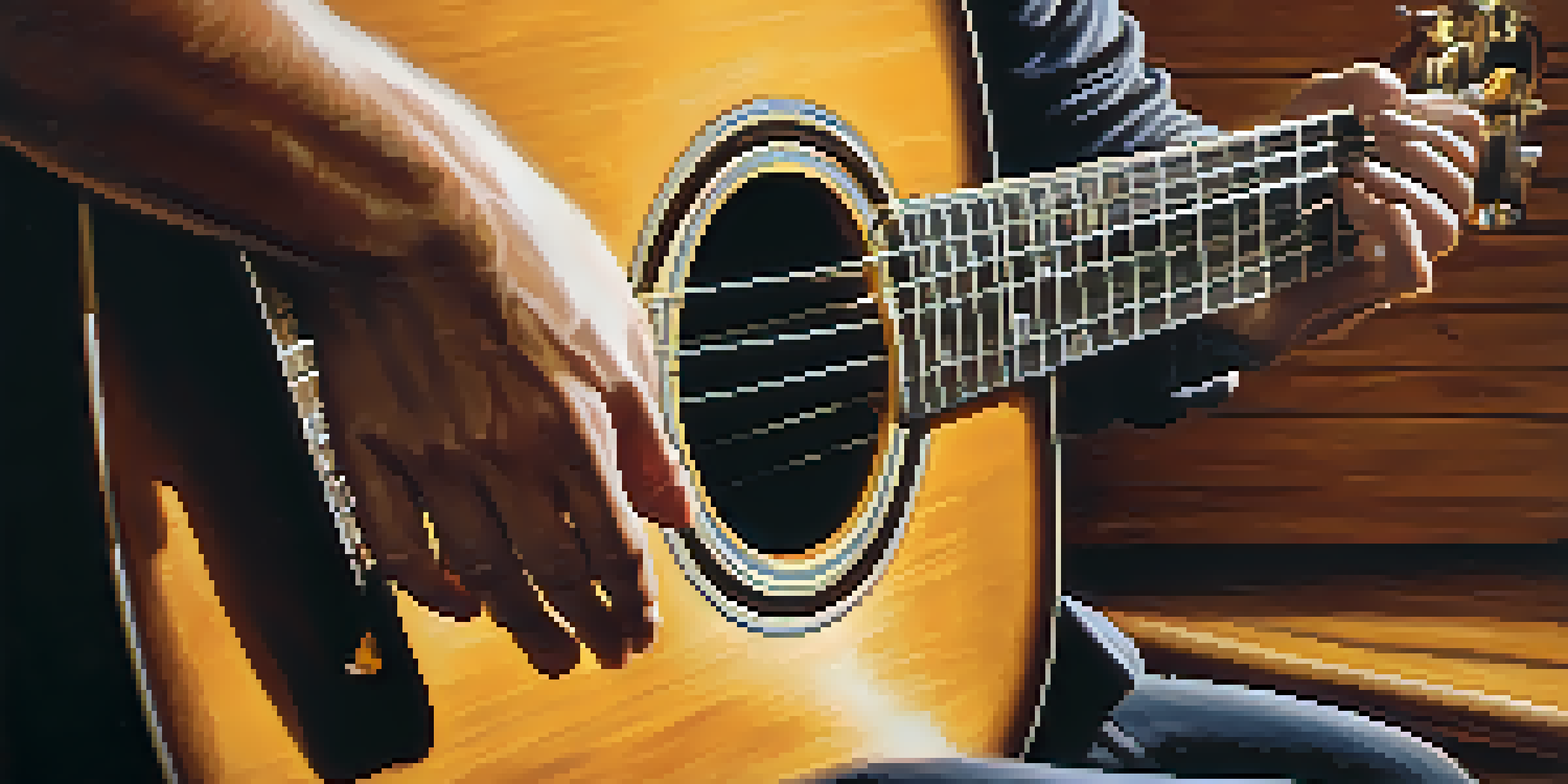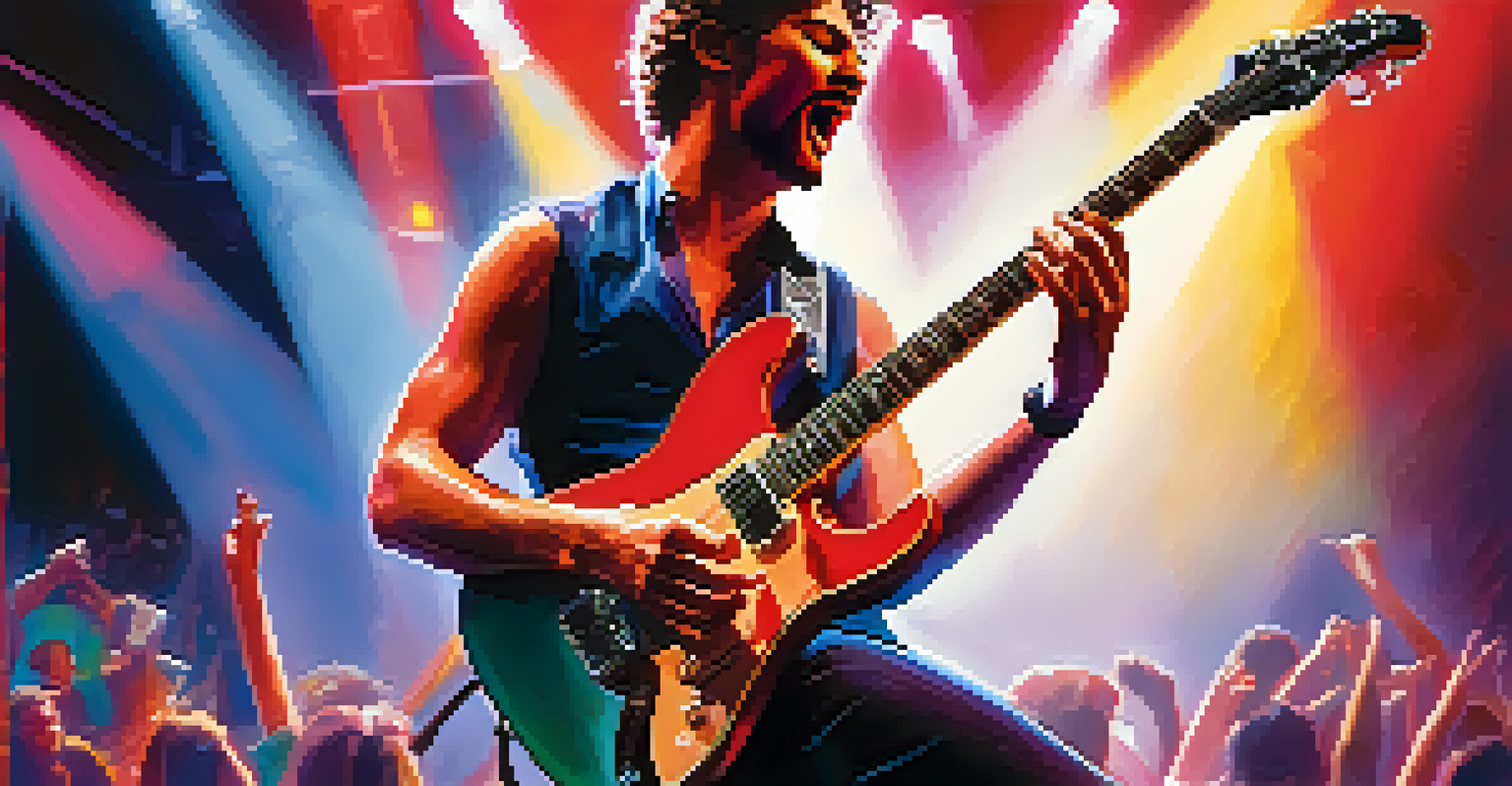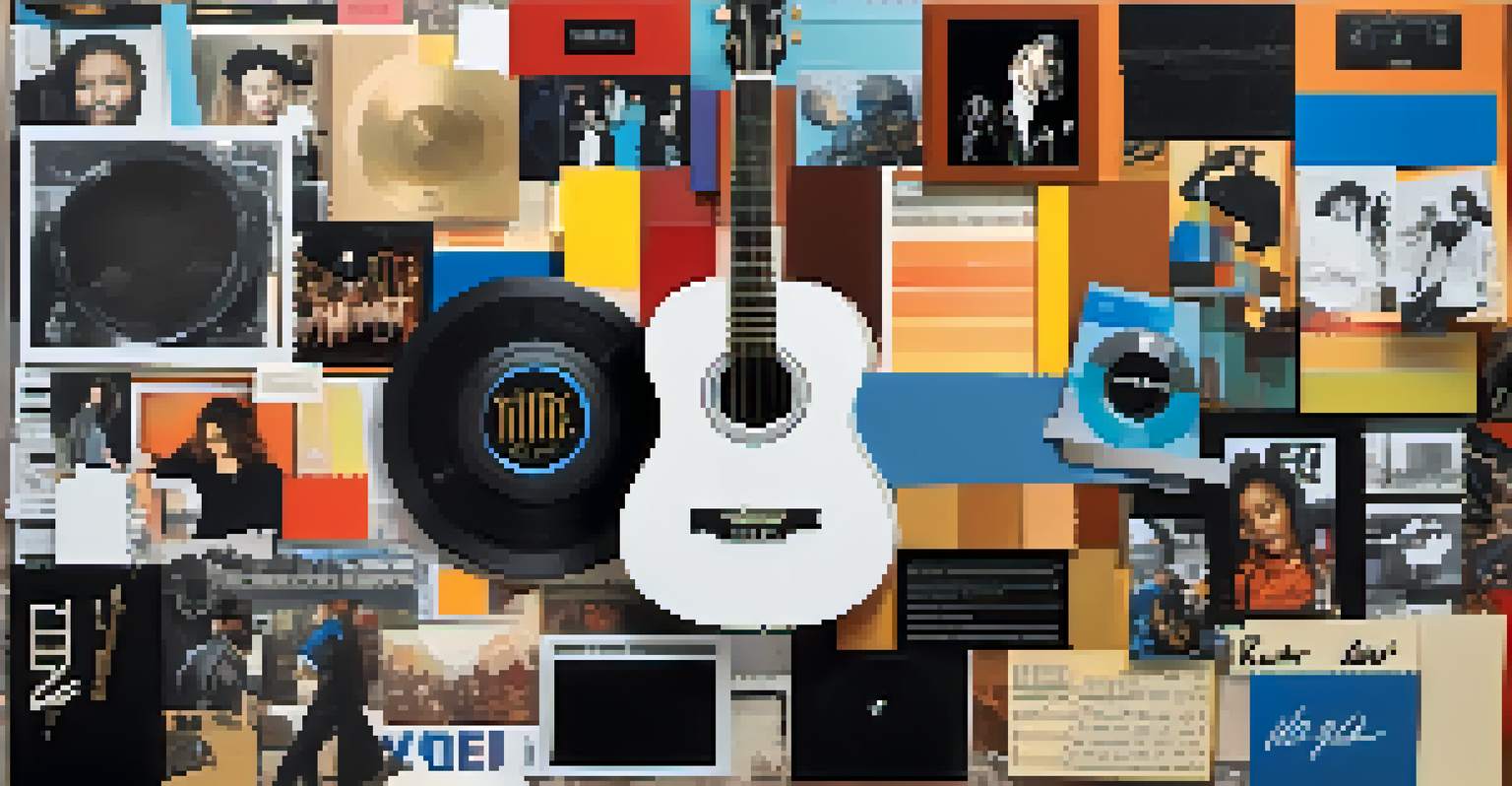Crafting Your Unique Guitarist Identity for Personal Branding

Understanding Personal Branding as a Guitarist
Personal branding is all about how you present yourself as a musician. For guitarists, this means showcasing your unique style, sound, and story. It's not just about the music; it's about creating a memorable experience for your audience.
Your brand is a story unfolding across all customer touch points.
Think of your personal brand as your musical fingerprint—no two are alike. By understanding what makes you stand out—be it your playing technique, genre, or stage presence—you can craft a narrative that resonates with listeners. This identity will help you connect with fans on a deeper level.
Moreover, personal branding can open doors for collaboration, gigs, and even sponsorships. When people know who you are and what you represent, they’re more likely to support and promote your music. So, let's dive in and explore how to shape your unique identity!
Identifying Your Musical Influences and Style
Every guitarist has influences that shape their sound. Take some time to reflect on the artists and genres that inspire you; these will help inform your unique style. Whether it's blues, rock, jazz, or something entirely different, these influences will be the building blocks of your identity.

Creating a mood board or playlist can help visualize and solidify these influences. By curating a selection of songs or artists that resonate with you, you can identify common threads that define your sound. This exercise not only clarifies your musical direction but also serves as a source of inspiration.
Craft Your Unique Musical Identity
Understanding your influences and developing a unique sound are key to establishing your personal brand as a guitarist.
Remember, it’s okay to borrow elements from your influences—this is part of the evolution of any artist. The goal is to fuse these inspirations with your unique twist, allowing your authentic voice to shine through and establish your signature sound.
Crafting Your Unique Sound and Technique
Once you’ve identified your influences, it’s time to develop your unique sound. This involves experimenting with different techniques, effects, and styles to find what feels right for you. Whether it’s fingerpicking, shredding, or using a loop pedal, the key is to play what you love.
Authenticity is the key to personal branding; be yourself, and you will attract the right audience.
Consider recording your practice sessions and reviewing them. This can reveal aspects of your playing that might be worth developing further. You might discover that a particular technique or riff really resonates with your style—embrace it!
Additionally, don’t shy away from innovation. Incorporating unexpected elements into your music can set you apart from the crowd. Remember, your sound is your calling card—make it memorable!
Designing a Visual Identity to Match Your Sound
Your visual identity is just as crucial as your sound. This includes everything from your logo and album art to your stage attire and social media presence. A cohesive visual identity can enhance your brand and make you instantly recognizable.
Think of your favorite artists and how their visuals complement their music. For instance, if you play heavy metal, a darker aesthetic might resonate with your sound. Use colors, fonts, and imagery that reflect your musical essence and personal vibe.
Engage Your Audience Authentically
Sharing your personal journey and connecting with fans through storytelling fosters a deeper relationship and enhances your brand.
Moreover, consistency is key. Ensure that your visual branding aligns across all platforms—your website, social media, and merchandise. This cohesive approach not only strengthens your brand but also builds trust with your audience.
Engaging with Your Audience Through Storytelling
Storytelling is a powerful tool in personal branding. Share your journey as a guitarist, including challenges, triumphs, and the moments that shaped your music. By letting your audience in on your story, you create a personal connection that can be deeply engaging.
Consider using platforms like Instagram or YouTube to share behind-the-scenes content, anecdotes, or even live jam sessions. This not only showcases your talent but also allows your personality to shine through. Fans appreciate authenticity and are more likely to support an artist they feel connected to.
Remember, your story is unique to you. Embrace it and use it to differentiate yourself from other guitarists. The more you share, the more your audience will invest in your journey.
Utilizing Social Media for Personal Branding
In today’s digital age, social media is a vital tool for personal branding. Platforms like Instagram, TikTok, and YouTube allow you to showcase your skills, engage with fans, and share your story with a broader audience. It’s a fantastic way to build a community around your music.
Start by consistently posting content that reflects your identity—whether that’s videos of your performances, practice sessions, or engaging with fans in the comments. Authenticity is crucial; share your highs and lows, as this makes you relatable and approachable.
Utilize Social Media Strategically
Leveraging platforms like Instagram and YouTube allows you to showcase your music, engage with followers, and grow your brand presence.
Moreover, don't forget to interact with other musicians and potential fans. Collaboration and networking can lead to new opportunities, helping to expand your reach and visibility. Your social media presence can be a game-changer in establishing your brand!
Evolving Your Brand as You Grow as an Artist
Your personal brand should evolve as you grow as a guitarist. As you learn new techniques, explore different genres, or even shift your musical focus, it’s essential to update your branding accordingly. This evolution keeps your brand fresh and relevant.
Regularly reassess your goals and identity. Ask yourself what aspects of your brand still resonate with you and which areas may need a refresh. Your journey as an artist is ongoing, and your branding should reflect that dynamic process.

Embrace change and don’t be afraid to take risks. As you develop your skills and experiences, your brand will naturally adapt, allowing you to reach new audiences and keep your existing fans engaged.